Abstract
1. We studied the reflex respiratory response to breath-by-breath alternations of fractional inspired oxygen (FI,O2) in full-term human infants delivered either vaginally or by caesarian section at 3-10 h (n = 6), 12-24 h (n = 12), 24-48 h (n = 18), 3-4 days (n = 21) and 5-8 days (n = 7) postnatally. 2. Respiration was measured by inductance plethysmography (Respitrace) and respiratory variables for each breath were calculated on-line by a microcomputer. Test runs (with alternations of FI,O2 between 0.21 and 0.16) and control runs (with an FI,O2 of 0.21) of 50-100 breaths were carried out during quiet sleep. For each respiratory variable the magnitude of the reflex breath-by-breath alternation was compared between control and test runs. 3. There was little respiratory response during control runs at any postnatal age. However, there was a significantly greater response to test runs in all infants studied and at all ages. 4. There were no significant differences in the degree of alternation during test runs between infants of similar postnatal ages delivered by caesarean section and those born vaginally. 5. In all infants the magnitude of the respiratory response increased with postnatal age, presumably reflecting postnatal increases in the hypoxic sensitivity of the peripheral arterial chemoreceptors. 6. The results indicate that in human infants the alternate breath method can be used to detect developmental changes in peripheral chemoreflexes between birth and postnatal day 8.
Full text
PDF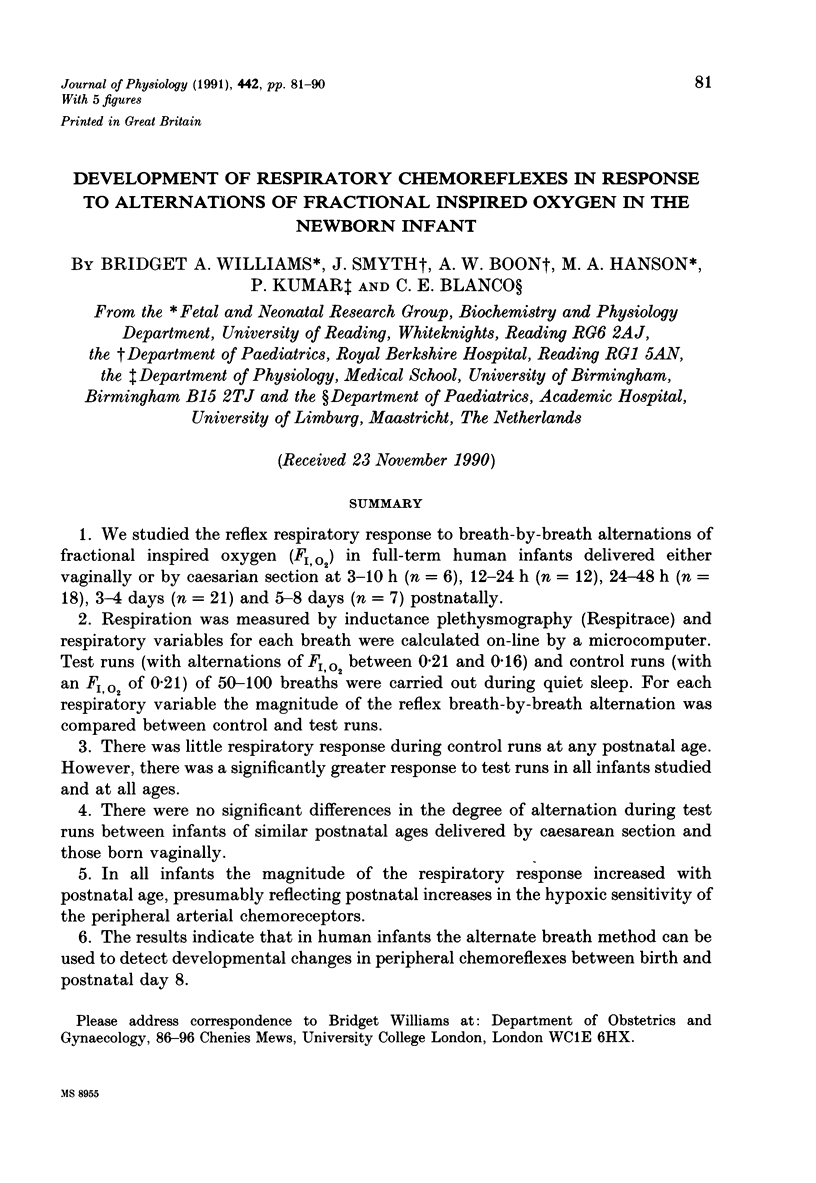
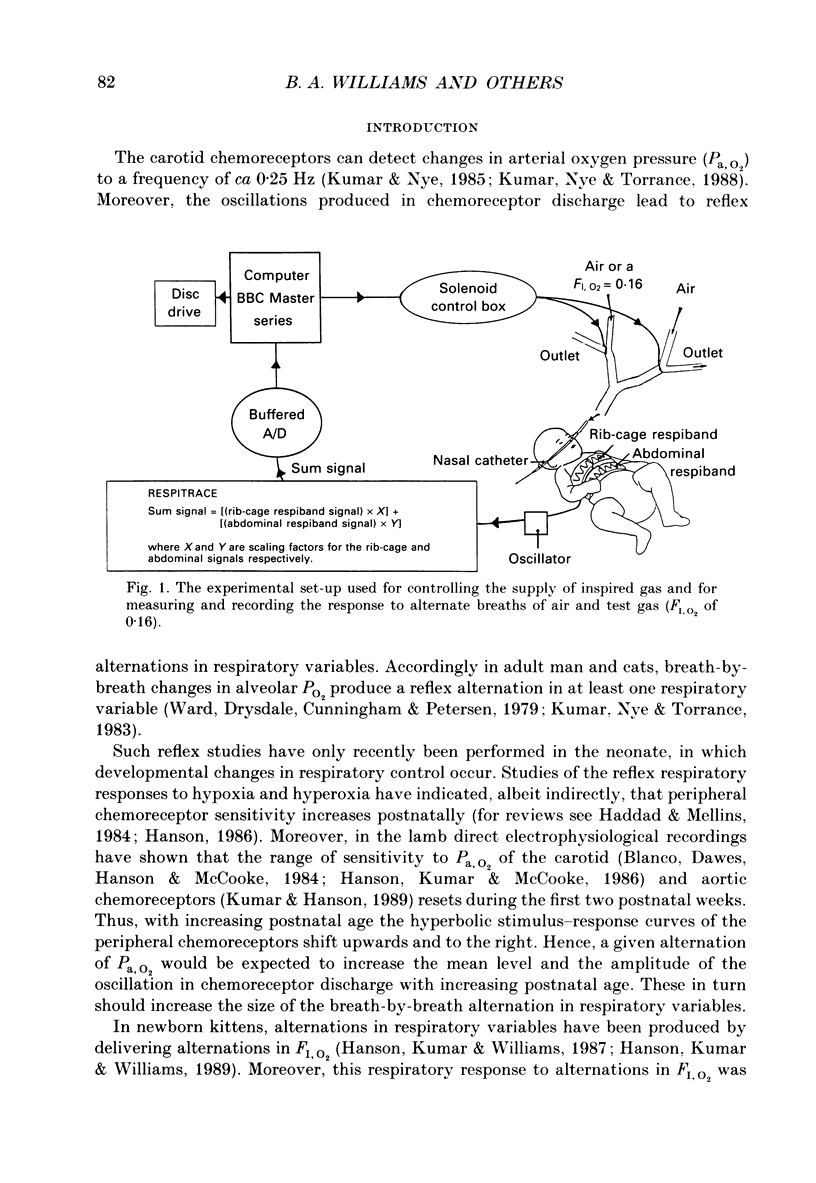
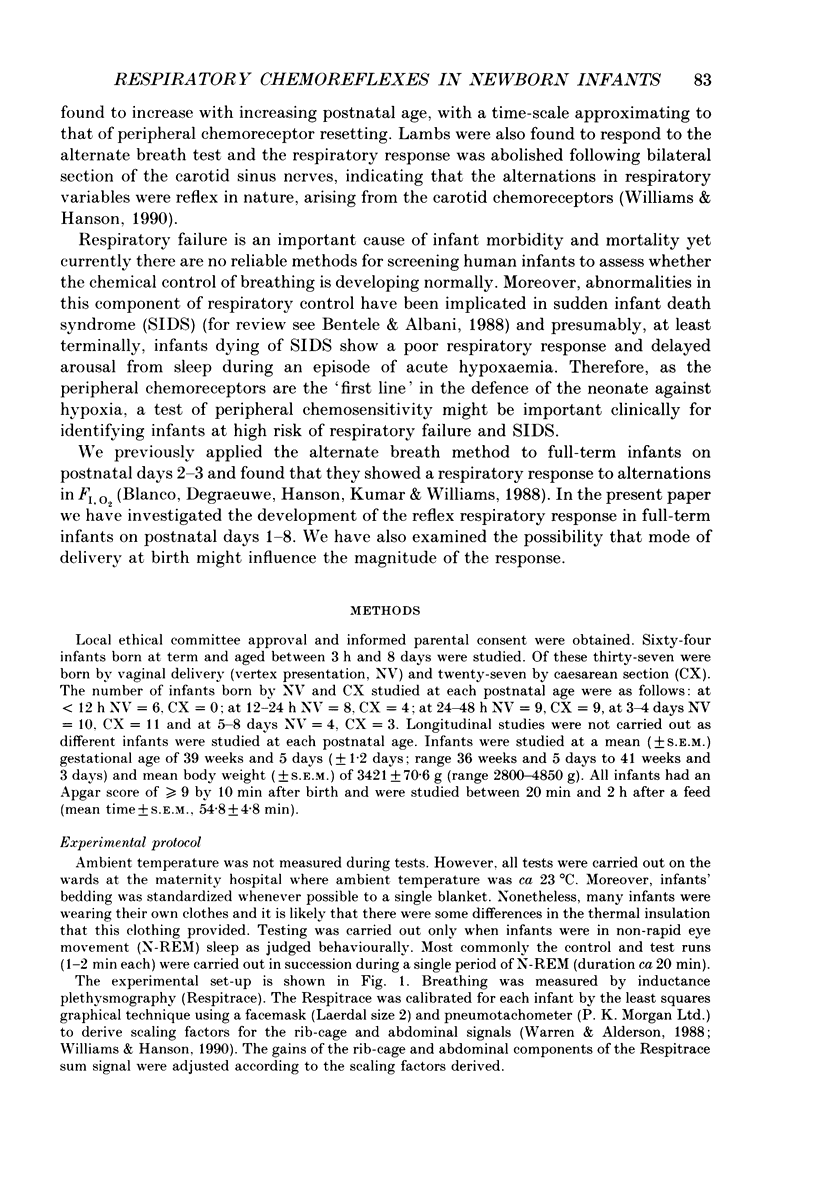
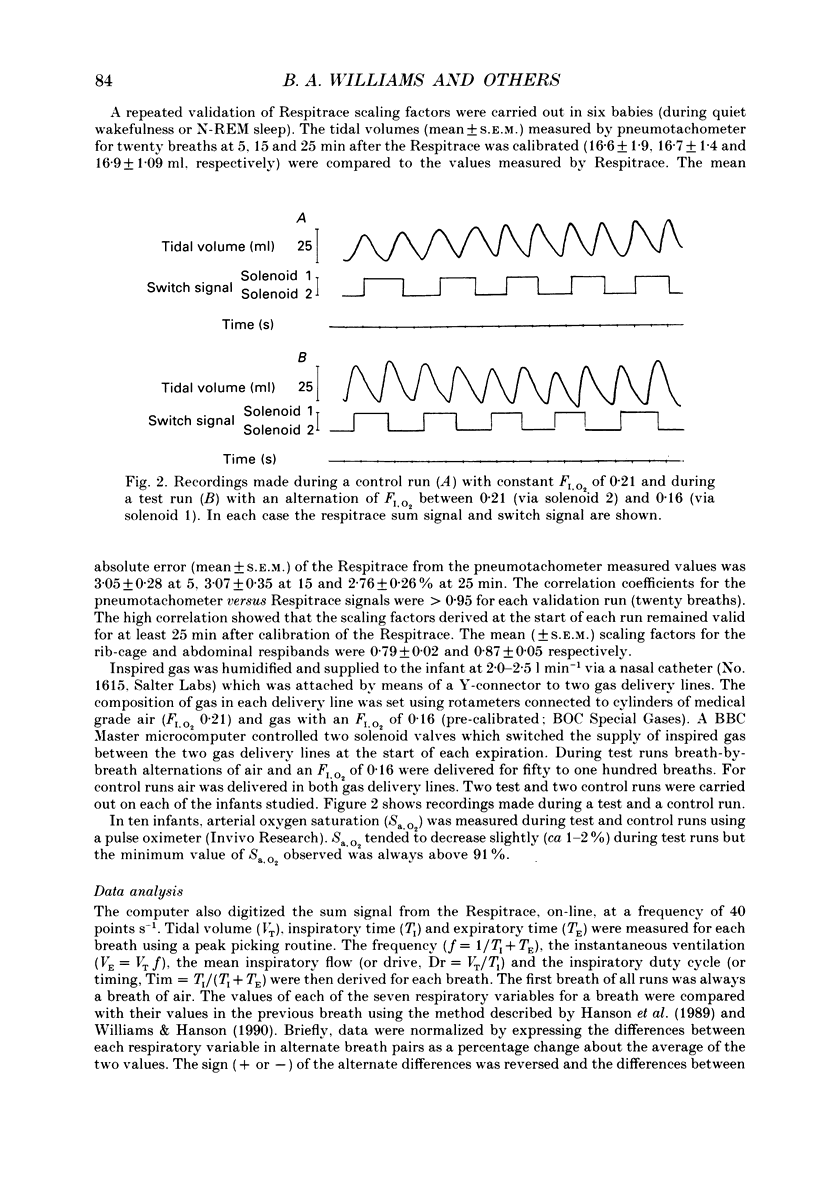
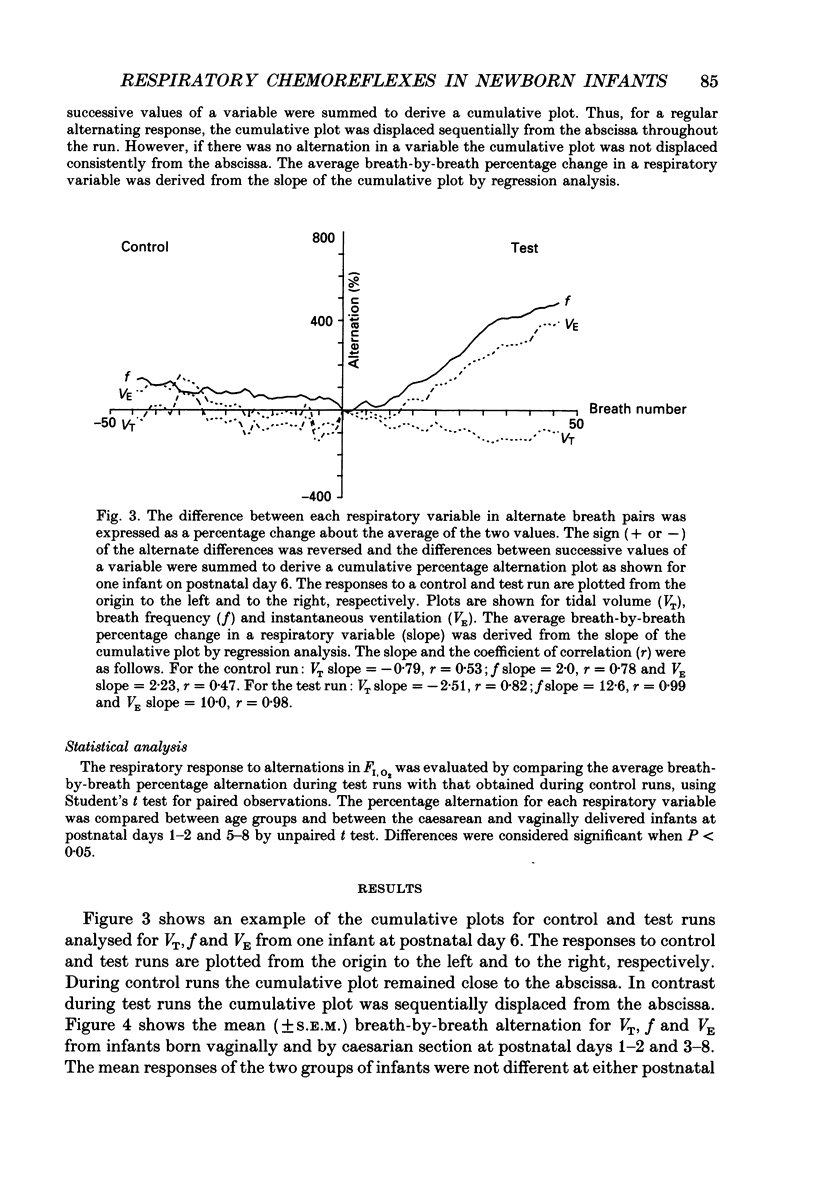
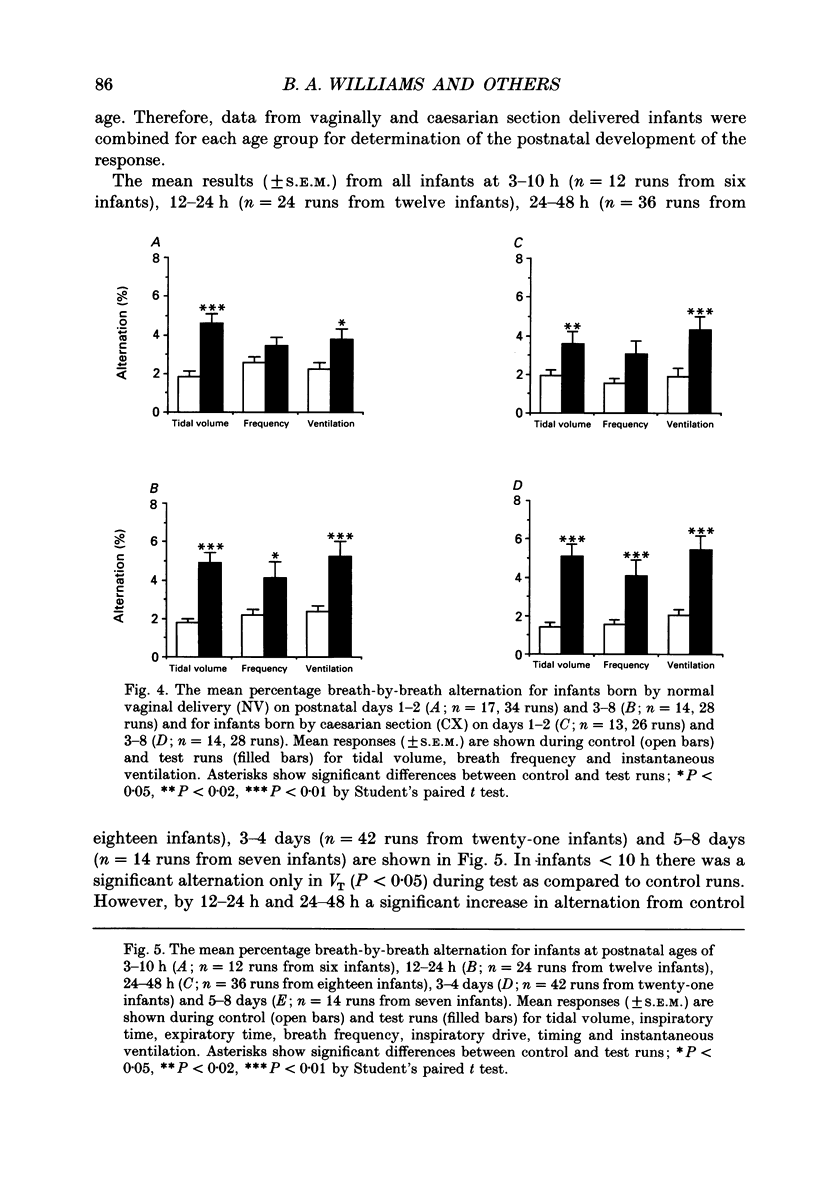
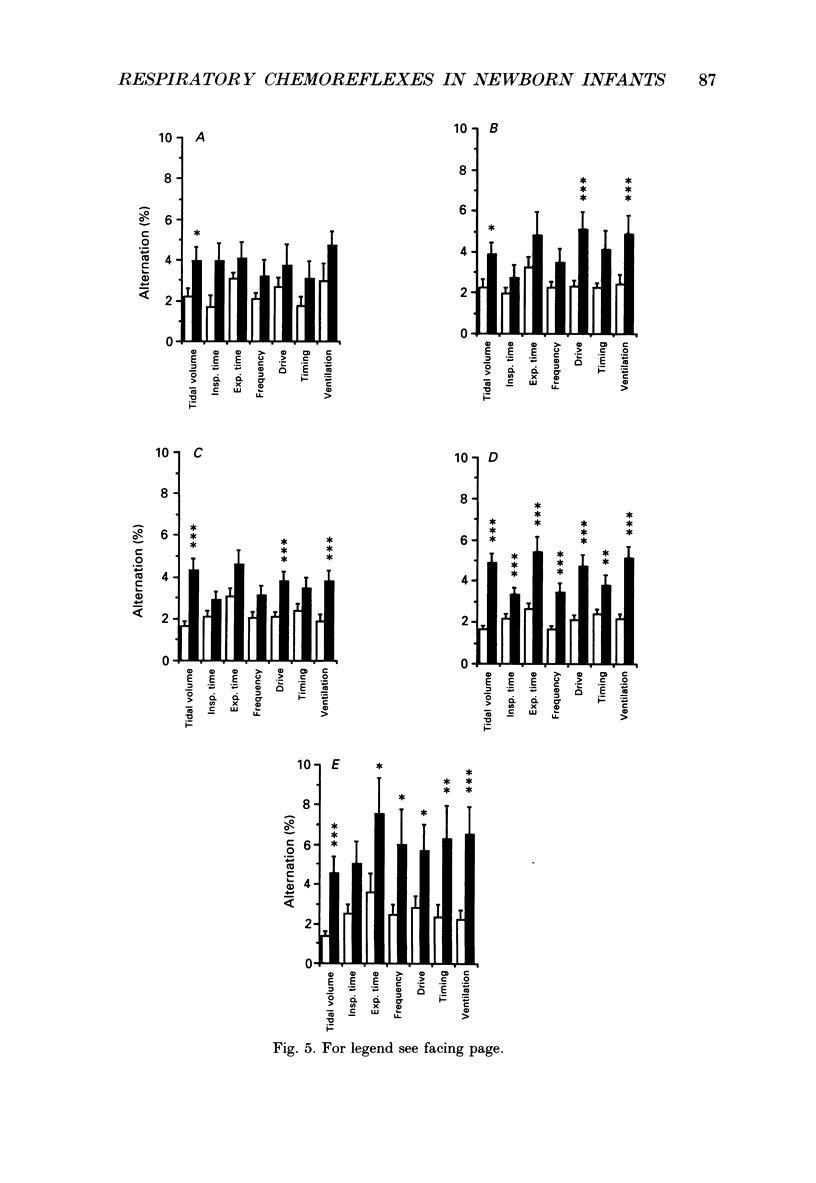
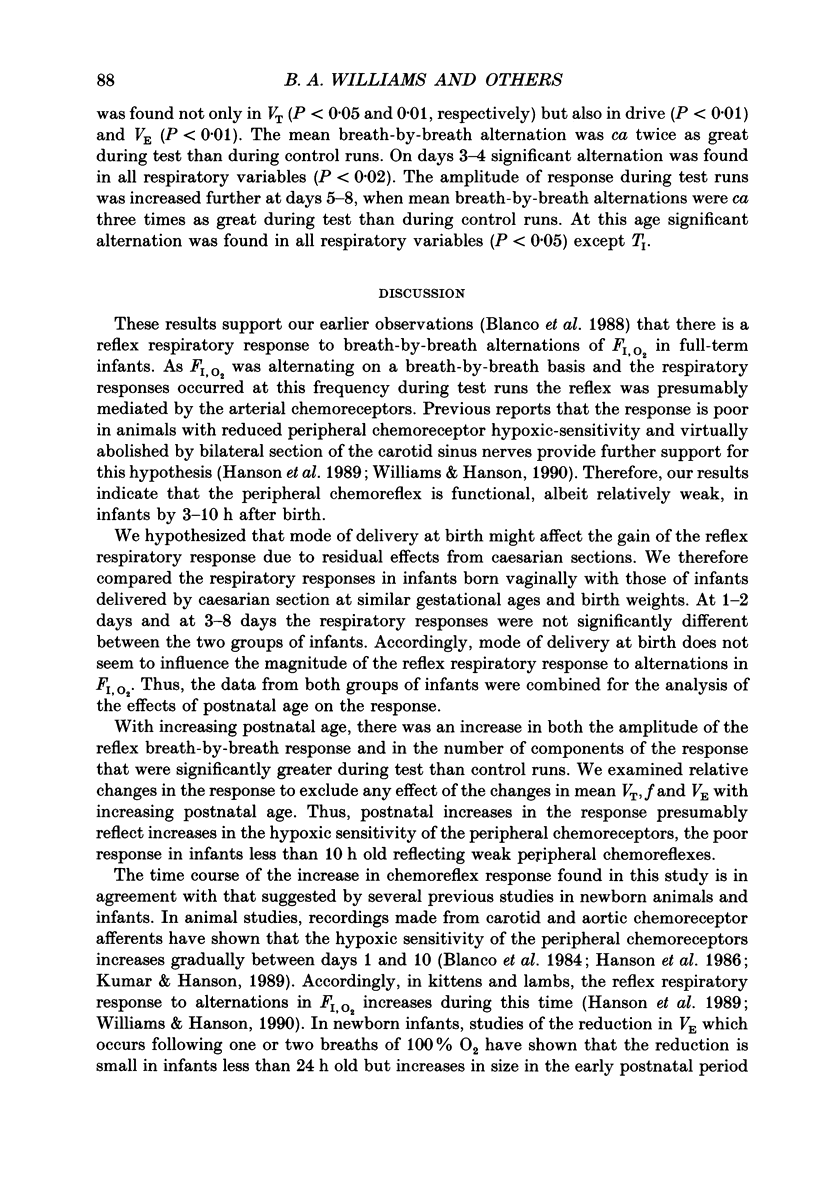
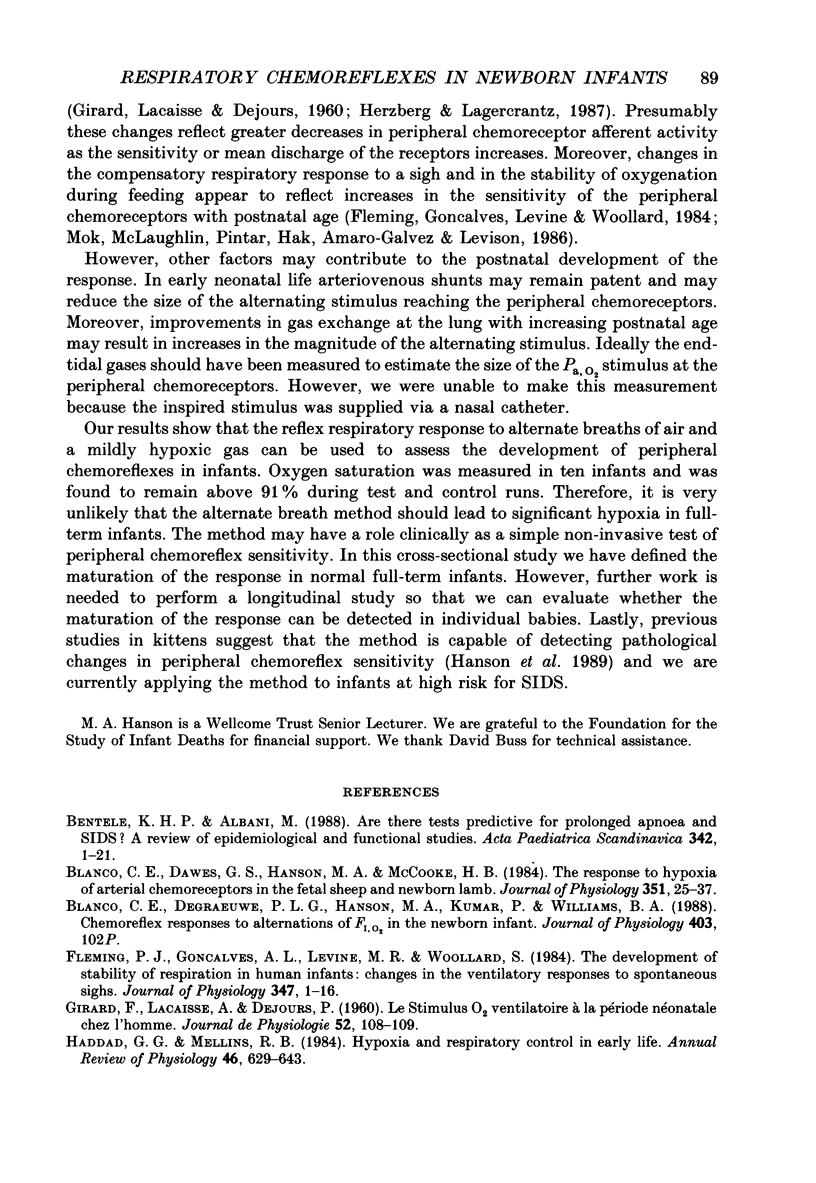

Selected References
These references are in PubMed. This may not be the complete list of references from this article.
- Bentele K. H., Albani M. Are there tests predictive for prolonged apnoea and SIDS? A review of epidemiological and functional studies. Acta Paediatr Scand Suppl. 1988;342:1–21. doi: 10.1111/j.1651-2227.1988.tb10792.x. [DOI] [PubMed] [Google Scholar]
- Blanco C. E., Dawes G. S., Hanson M. A., McCooke H. B. The response to hypoxia of arterial chemoreceptors in fetal sheep and new-born lambs. J Physiol. 1984 Jun;351:25–37. doi: 10.1113/jphysiol.1984.sp015229. [DOI] [PMC free article] [PubMed] [Google Scholar]
- Fleming P. J., Goncalves A. L., Levine M. R., Woollard S. The development of stability of respiration in human infants: changes in ventilatory responses to spontaneous sighs. J Physiol. 1984 Feb;347:1–16. doi: 10.1113/jphysiol.1984.sp015049. [DOI] [PMC free article] [PubMed] [Google Scholar]
- GIRARD F., LACAISSE A., DEJOURS P. [Ventilatory O2 stimulus in the neonatal period in man]. J Physiol (Paris) 1960 Jan-Feb;52:108–109. [PubMed] [Google Scholar]
- Haddad G. G., Mellins R. B. Hypoxia and respiratory control in early life. Annu Rev Physiol. 1984;46:629–643. doi: 10.1146/annurev.ph.46.030184.003213. [DOI] [PubMed] [Google Scholar]
- Hanson M. A., Kumar P., Williams B. A. The effect of chronic hypoxia upon the development of respiratory chemoreflexes in the newborn kitten. J Physiol. 1989 Apr;411:563–574. doi: 10.1113/jphysiol.1989.sp017590. [DOI] [PMC free article] [PubMed] [Google Scholar]
- Hertzberg T., Lagercrantz H. Postnatal sensitivity of the peripheral chemoreceptors in newborn infants. Arch Dis Child. 1987 Dec;62(12):1238–1241. doi: 10.1136/adc.62.12.1238. [DOI] [PMC free article] [PubMed] [Google Scholar]
- Kumar P., Hanson M. A. Re-setting of the hypoxic sensitivity of aortic chemoreceptors in the new-born lamb. J Dev Physiol. 1989 Apr;11(4):199–206. [PubMed] [Google Scholar]
- Kumar P., Nye P. C., Torrance R. W. Do oxygen tension variations contribute to the respiratory oscillations of chemoreceptor discharge in the cat? J Physiol. 1988 Jan;395:531–552. doi: 10.1113/jphysiol.1988.sp016933. [DOI] [PMC free article] [PubMed] [Google Scholar]
- Mok J. Y., McLaughlin F. J., Pintar M., Hak H., Amaro-Galvez R., Levison H. Transcutaneous monitoring of oxygenation: what is normal? J Pediatr. 1986 Mar;108(3):365–371. doi: 10.1016/s0022-3476(86)80874-5. [DOI] [PubMed] [Google Scholar]
- Ward S. A., Drysdale D. B., Cunningham D. J., Petersen E. S. Inspiratory-expiratory responses to alternate-breath oscillation of PACO2 and PAO2. Respir Physiol. 1979 Apr;36(3):311–325. doi: 10.1016/0034-5687(79)90044-6. [DOI] [PubMed] [Google Scholar]
- Warren R. H., Alderson S. H. Face mask application for calibration of respiratory inductive plethysmography in lambs. J Dev Physiol. 1988 Apr;10(2):175–178. [PubMed] [Google Scholar]
- Williams B. A., Hanson M. A. Role of the carotid chemoreceptors in the respiratory response of newborn lambs to alternate pairs of breaths of air and a hypoxic gas. J Dev Physiol. 1990 Mar;13(3):157–164. [PubMed] [Google Scholar]


